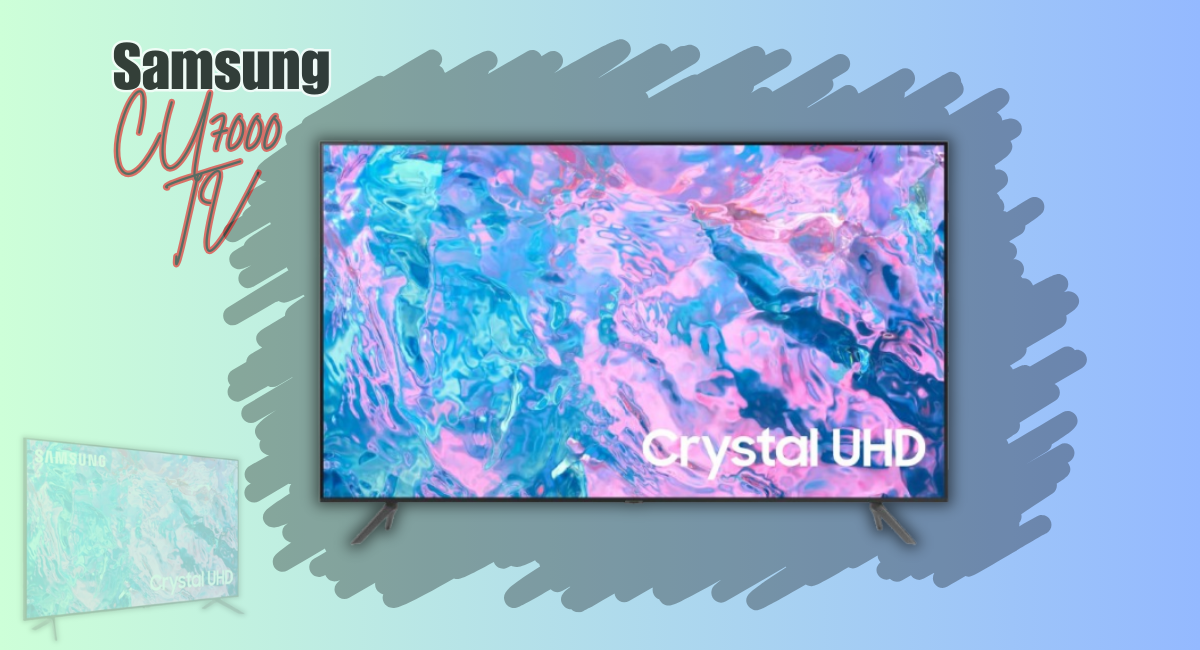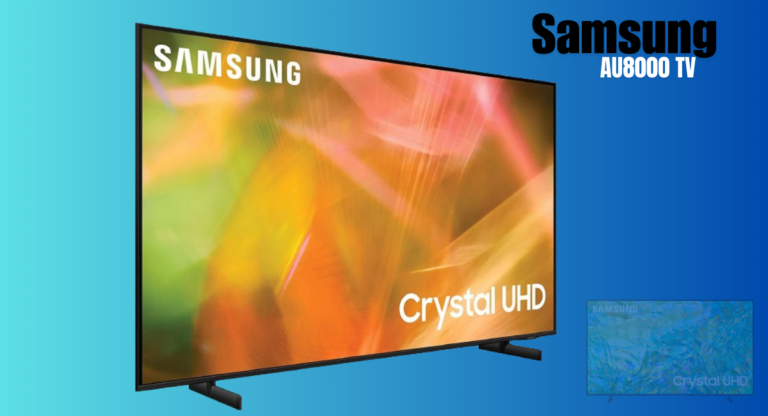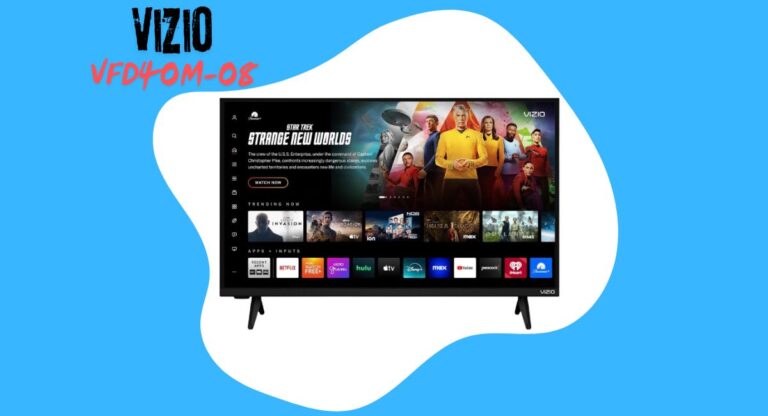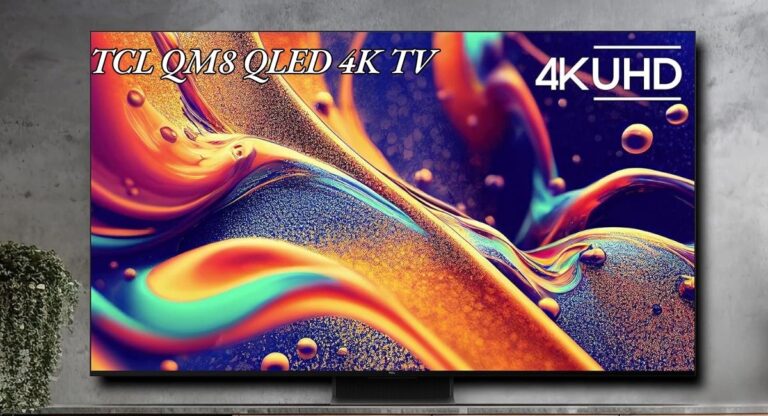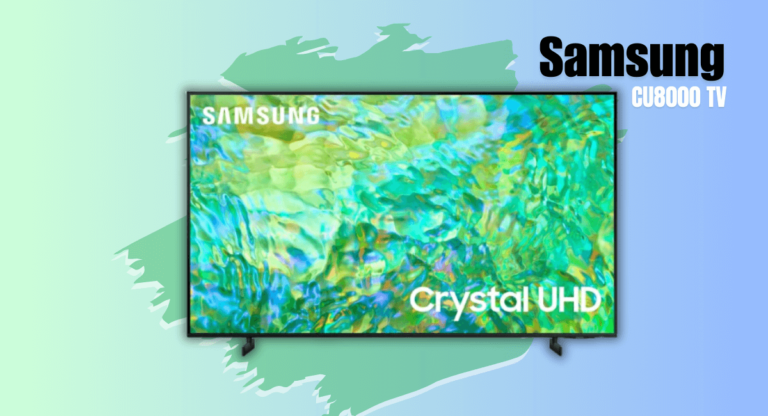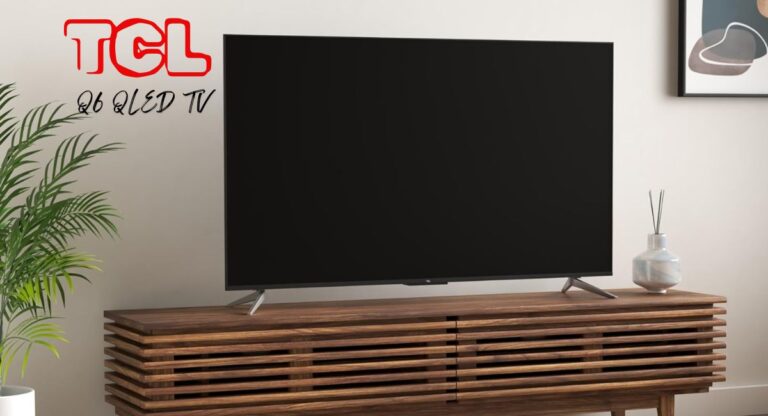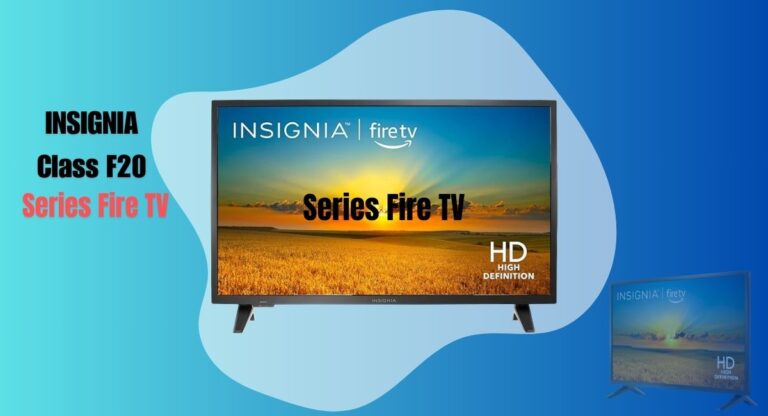Samsung CU7000 TV Review
Having used the Samsung CU7000 TV for a while now, I would like to provide some real-life experiences concerning this TV. Among them are the picture, the sound, and any smart features – this budget 4K model is a great solution for those willing to have an advanced entertainment system while they do not have a lot of money to spend. Not that it has too many of them, still the CU7000 manages to please casual users even without T2074n its portion of tinsel. In this review, I will analyze all of their features in terms of design, built quality, usability and pricing.
Reasons to Buy
- Affordable 4K Option:
- Crystal Processor 4K:
- HDR10+ Support:
- Tizen Smart Platform:
- Game Mode (ALLM):
- Slim, Modern Design
Reasons to Avoid
- Limited Refresh Rate (60Hz)
- Basic HDR Performance
- No Local Dimming
- Limited HDMI 2.1 Support
- Average Sound Quality
- Limited Viewing Angles
Design and Aesthetics
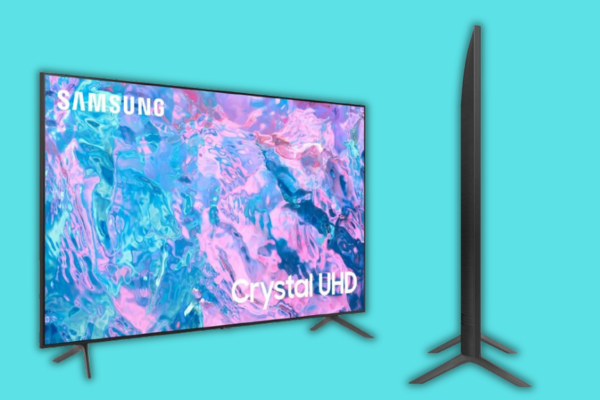
It actually looks awesome for a budget model with the Samsung DU8000 design. It was the first such model that perfectly matched today’s modern design trends-it is straight, elegant and what’s very important – does not look cheap. They mention that the thickness is a little more than that of the premium Samsung CU8000 model. That aside, it is quite sleek, having thin bezels that define the screen from the very look of it. The size is somewhere around 0.35 inches 0.9 cm higher, so it does not obstruct your vision. In the heat of action, it is easy to miss the non distracting frame in other words, the bezels.
The rear of the television is composed of textured plastic which is to be honestly expected from a budget model, something rather more useful considering the amount of time one spends near that part of the TV. No, it is not the spooky thin and cheap excuse for a plastic casing. If this is what a do-it-yourself television looks like on YouTube. It did not have a “budget” attitude that was built in mostly plastic.
Fitting the plastic feet is easy as no tools or screws will be required – just slide the parts into position. With this, installation is fast and free of stress at best. On the other hand, the Samsung 55″ TV has a little wobble when on the stand provided, which may present some concern if there are kids or pets that may bump or knock the TV. That said, the wobble is not too much and for most users, it would be acceptable given the budget range. The distance on height from the table to the screen is 3.3 inches, hence one can conveniently place a sound bar under the TV.
The stand Base area for the 55 inch model is approximately 36.3” x 8.7” whereas looking at the overall dimensions and size the stability is moderate. Even though it is not the slimmest TV ever produced, (max thickness is 2.24 inches or 5.7 cm) it still executes a relatively slender profile that does not become bulky when placed on walls.
In general, I was surprised by how good the Samsung DU8000 looked. It was not harsh to the eyes with the thin bezels and easy to put together while featuring a textured rear and a cleverly designed stand that felt better than a conventional budget offering. The Samsung DU8000 is worth your consideration on the exterior if price is your sole consideration.
Materials and Build Quality
Samsung UN65CU7000FXZA has a relatively good build, at least for a low-end product. Plastic is the dominant material, but still, it does not feel cheap to touch like LG G3 OLED TV. The body is thicker than in the case of the Samsung CU8000 which adds slight durability to the TV so that it does not bend when the amount of force is applied on the panel or when it is shaken. The additional thickness gives it a more robust feeling, which is a good feature to have for it being in this cost range.
The TV back panel certainly has some regions that will easily bend and they include the distanced VESA mounting holes. When you press that area, it gives in well but not at a level that worries you about how well the television will cope with pulling within a reasonable period of usage. Such details are not critical, as you will keep in mind their presence during the mounting procedure, and cannot expect problems later unless there are issues with the stand or the wall bracket.
The plastic feet are somewhat flimsy, but that’s perfectly reasonable for a model from this group of products. However, they do have a light weight construction, which allows these base stands and feet to do their job of supporting the Samsung CU7000 TV satisfactorily like Samsung TU8000 TV. When the TV is placed on the stand, there is a little bit of “wobble”, yet nothing that poses any serious threat to stability. Unless a person’s living area happens to be particularly hectic and there is a higher risk of the TV actually getting banged around, the wobble is unlikely to be too disappointing to a user.
Except for the aspect of being low priced, the materials and build quality of the Samsung UN65CU7000FXZA is pretty good for what it costs. While it certainly does not have the robust feeling of much more expensive models, it is usable for daily activities, and most people shouldn’t find the slight bending of the rear case or the built-in stand’s wobbling too much of a problem. If you want a cheap option that does better than most cheap ones in terms of durability, this one does quite well.
Picture Quality
At its price range, picture quality of the Samsung CU7000 TV is passable however there is definitely room for improvement for the ones who anyhow seek HDR performance. The contrast ratio of TV is quite impressive as it stands at 6793:1 enabling deep blacks during dark scenes. This is excellent if you view content in a dark room, as the TV’s innate contrast enhances the experience of those darker scenes. Nevertheless, without local dimming, the picture quality starts to degrade when those dark areas need to contain bright highlights as well, such as bright shots in dark scenes. Rather than appearing brighter, the bright elements tend to drown out the dark regions instead, leaving the image rather flat.
The fact that it has no local dimming also means that the TV can’t individually control the backlight in discrete areas which is why it has a hard time blending dark and bright images together at the same time. Looking at the bright side, this also means there is no blooming – where bright things (e.g. subtitles) cause light to leak into the adjacent dark areas. This enables the TV to be suitable for materials that involve subtle lights in dark scenes, however, it still lacks the ability to produce a palpable truly HDR experience.
Sadly, we are bound to say that this TV’s HDR brightness is somewhat lacking. The key takeaway is that it simply doesn’t get bright enough to properly render HDR content where that is possible. When the LCD is blessed with a Wide Colour Gamut enhancement, the Brighter highlights are an understatement where one would expect the Brighter highlights on an HDR TV expect. However, in some circumstances, like all other TVs, when bright highlights are condensed to one or more small patches on the screen, the whole image darkens which further utilizes the distracting factor rather than enhances the overall experience. And it isn’t any better even in Game Mode where you’d expect brightness to increase, the difference is almost non-existent and the HDR images still remain rather two-dimensional.
The effort that the TV makes in its PQ EOTF tracking is rather commendable with respect to some emissions laws. There is still most especially when calibrated tonemapped for ALL RMS enabling IT frame rates of no less than percentage points. Up until peak brightness, it does quite well getting the HDR picture accurately before it saturates and then begins cutting the image. This indicates that some very fine black details are lost in elements containing very high light levels in the image, and this is another constraint of this TV with regards to the HDR capability.
When it comes to colors, the Samsung CU7000 TV has a decent color reproduction but it does not qualify as wide color gamut. It accurately reproduces the color space DCI-P3 that is often used in HDR content but somehow the colors appear a bit washed out. This makes some bright images, such as sunsets or colored landscapes, look somewhat hazy. In addition, it is worth noting that the television is not very good at tone mapping, which also means that the colors in HDR content may be off from time to time. Further, its look within the Rec. 2020 color segment, which now appears to be trending, is also poor, so the TV is not exactly future ready as far as tackling upcoming changes in content formats is concerned.
The TV’s performance on reflections is reasonably well done but not up to scratch. It has a semi-gloss finish that helps in reducing some level of glare making it ideal for use in a reasonably lit room. However, because of the low peak brightness, it fails in conditions of intense light. In case you are in a location where there is too much natural light, the screen may on some occasions be quite difficult to view.
The good news is that on the whole, the TV’s upscaling is pretty good, especially for fine details. By and large, the upscaled content is crisp and clean, though some hardcoded text is a challenge. Such problems are common to be found with cheap tv-s, this does not come as a surprise.
Sound Quality
Unfortunately, sound is one aspect where the Samsung CU7000 TV tumbles down because this television has a fairly weak audio output that would not satisfy those who want powerful and cinematic surround sound. Straight away, the low-frequency extension of the TV is up to 95.14 Hz, protecting the latter from situations with a high degree of bass as well. If the case happens to be watching action movies or something heavy on the bass, the entire sound will feel quite shallow. This part isn’t unusual for televisions in this category of price, but if one is accustomed to richer sounds, it’s certainly a letdown. But this sound quality still better than the LG UR9000 TV.
Maximum volume is one of the problems which cannot be overlooked. The sound graph of the TV is topped 81.1 dB SPL which again, is low, especially in big rooms or noisy places as it can be very difficult to hear. Well, if you want to blast your, uh, experience through the vents and immerse yourself in the viewing, this TV will not do that for you. What’s worse than that? When orbiting the volume is that the sound quality is worse. The TV gets sound more blurry and unclear as the volume increases which is not good since it will be expected that you are likely going to have to bring the volume up as the TV is rather quiet.
The dynamic range compression is also pretty low too, sitting at 3.35 dB which means that the difference between the quietest sounds and the loudest sounds is not that broad. Due to this, the audio may be overly bland, especially when viewing the contents with richer sound features such as movies and games with heavy sound effects and back and forth dialogues.
With regards to distortion, this is where the TV falls short of delivering exemplary performance. At average listening levels, total harmonic distortion is about 0.443 which is decent, yet nothing to write home about. As you crank the volume up to the max level, the harmonic induces total distortion of 1.100 which obviously means that incidences of distortion are present. This causes dialogue and other details in audio to be less clear especially in loud scenes. The intermodulation distortion is also high at 80 dB, with a rate of 13.35% suggesting that the TV does not do well in terms of audio clarity on high-volume ranges with richer soundscapes.
Smart Features
Samsung UN65CU7000FXZA comes pre-installed with Samsung Tizen OS (2023 version) unlike Samsung AU8000 TV since it comes 2021 version; thus, anyone will find it easy to operate. Other than these, the CU7000 is equipped with a nice smooth operating system, although slightly less to that of the CU8000 or other higher end models. The fewer animations mean that the OS doesn’t feel sluggish on this low end model without such, rather, it makes the device and this OS feel rather responsive without stressing the system. For example, opening YouTube takes about 2 seconds and turning on the backlight takes about 5 seconds, which is very acceptable for daily activities.
The most interesting feature of the system for the user is MultiView, the function that allows the simultaneous display of several sources. So, this is useful, for example, when you want to watch something but also want to watch a sports game or scroll through social media. This is a kind of feature that you can only see from the high end models and that is why it is good that this one too supports it.
The selection of apps available for use on this TV will not disappoint potential users. The device comes ready to use with all the known applications for streaming such as Netflix, Youtube, among others, where these can be opened from the main screen with ease. The app smoothness is average, meaning there is little weight when launching the apps with most of the normal apps being ready for use almost instantly but might some lag with the more heavy apps. But, generally, everything functions fast enough for normal viewing.
Curiously, like any other smart television of recent times, the primary screen has promotions, and you cannot turn them off. Because most people do not use the prime time adverts and as usually preferred this is quite annoying as it has already become the norm in all smart TV brands.
In the case where one is a fan of casting or streaming content from their phone or any other device, there is a futuristic statement made. Thing is, cast-and-send action with a device works both ways and subjecting content from your device to the screen is as easy and smooth. You can watch content from USB drives including HDR content on the TV.
In terms of HDR, the TV has Netflix and Youtube HDR support built in which allows you to enjoy HDR mastered content in a touch of a button. Even though the HDR performance could be better (considering the brightness limitation of the TV), it is still nice to have those options when you want to do some high quality video streaming.
There are some basic features lacking a little bit. For example this model does not have any voice control. The remote here is much more basic and does not feature Bixby or Alexa or any voice assistant controls like some high end remotes. However, if that is how you want to control your TV, you will have to download the Samsung SmartThings app. Another remote is quite simple with a few buttons for popular streaming apps but it works on a battery; this must be an inconvenience to those who are used to the rechargeable remotes by Samsung.
The TV can also be controlled through an HDMI-CEC interface which allows connecting devices such as soundbars and video game consoles and controlling them through the TV remote. This is especially useful if you, like me, do not want to be stressed with numerous remotes.
With the Samsung CU7000 TV, there is a quantity of smart characteristics that really do impress within this entry level classification. It may not be overly said that it has a responsive user interface loaded with visually appealing apps as well as enhanced features but this television simplifies everything by making it very easy and accessible to the most essential applications. The television would probably give an optimal smart tv experience without overly stretching your budget.
Connectivity and Usability
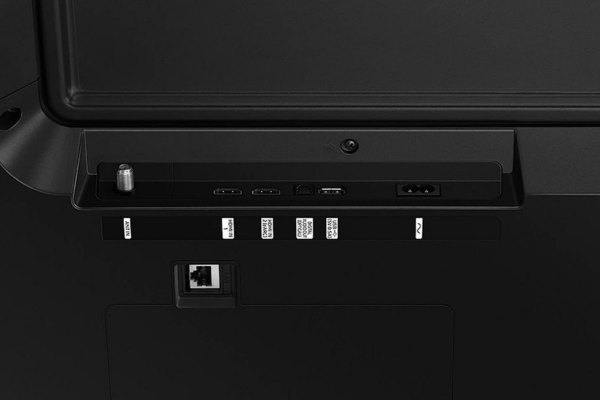
The Samsung CU7000D comes with fairly sufficient connective features; however, some of the features may be underwhelming for certain users. First of all, regarding the video formats, the TV can perform HDR10, HDR10+, HLG, which improves on delivering brighter bumper saturations and arguments on contrast for HDR content. Nonetheless, there is no support for Dolby Vision which is something many would actually wish to have since most content that provides the best quality has been used with this technology, more so streaming services.
On the connectivity part, the TV has three HDMI 2.0 outputs which is enough to connect most of the devices today such as gaming machines, streaming boxes, or sound bar systems. However, it is short on HDMI 2.1 bandwidth which means anyone having the latest gaming devices will find it a hassle to enjoy 4k 120hz since the device comes with an HDMI 2.1. Adding more regarding the usage scenario for gaming and watching movies or shows without the need to switch an HDMI is one of the typical usage, which shouldn’t be horrible on the HDMI 2.0 ports either, but for the sake of future concerns, it should be somewhat unhappy.
With the incorporation of CEC (Consumer Electronics Control), which is a plus, it is possible to connect other viable HDMI-connected peripherals like soundbars and blu ray players and manage these devices with one remote. You will also not experience challenges streaming 4K content supported by all the three HDMI ports due to HDCP 2.2 support – a great asset for those having 4K streaming devices or favorite 4K Blu-ray players.
As for sound, the eARC (enhanced Audio Return Channel) function stands out. OTTs will relate to the mention of this particular feature as it lets the television pass any audio including all the dolby-audio edition formats to the soundbar or the AV receiver with ease. This is a cool function geared towards most of the users that set home theaters as it provides unencrypted sound. Unfortunately, just as most Samsung models, the TV does not have the capability of offering DTS passthrough which may be a big letdown for most users who have a library of DVD or Blu-ray movies with DTS enhanced sound.
Regarding the Wi-Fi, this Samsung CU7000 TV offers both 2.4 GHz and 5 GHz bands, a feature that anybody could appreciate as it provides solid chances to stream video using your home network. This means that provided that a reasonable broadband connection is available, prepared streaming 4 k quality content would work with no interruptions at all.
As for the ports and connections, the TV has one external USB 2.0 that can be used to connect an external drive or other media equipment. This means lower data transfer rates when streaming HD content off the USB drive. It also includes an encased Digital Optical Audio Out which is quite handy for specific types of external audio devices that do not have an HDMI interface.
There are no RCA or 3.5mm audio output options which could be a problem if you have some conventional audio equipment. One would also notice that there are no Component and Composite inputs, which may be a problem for the people who wish to connect older gaming consoles or a DVD player.
If you would rather have a more stable interconnection for streaming 4K contents, Ethernet support is not a problem. There is no DisplayPort or IR In though which could limit some users in case they use more advanced setups than just a monitor and a single remote.
All in all, the Samsung CU7000D tv offers sufficient connectivity options for streaming or casual gaming purposes for the average person. That said, audiophiles and even some techies will find some shortcomings, like HDMI 2.1 support and no DTS audio passthrough. It is an effective solution for primary household use, but it does not offer any options for users who are keen on more advanced or transitional solution for their needs.
As for the usability aspect of this particular TV, we are looking at a somewhat finished state and somewhat unfinished. Social interaction is fairly basic and based on the Tizen OS, so finding any of the settings or even inputs is painless, but sound reproduction is not that well adjusted. In terms of loudness, 81.1 dB SPL is pretty low, and if you want to be cacophonic in a large room, this can be an issue. When the volume is raised, the quality of sound drops with the clarification going to the background and audible distortion being prominent.
Another downside of this sound system is the absence of bass since that relates with the overall sound profile which can feel somewhat flat especially when a user is engaged in an action movie or playing particular types of games. The image quality on the TV is good; however, the same cannot be said for the audio, which means one really needs an external soundbar set or speaker additional to the TV to optimize one’s viewing experience.
Final Verdict
Every TV maker must have a product at the lower end of the ladder; the Samsung CU7000 TV is Samsung’s at this moment. It’s impossible to argue against its economy of production; so many different sizes are low priced, and once again one will never need to worry about his or her commands not being detected in console games anyway. In that sense, this set might work great, especially for younger children. They are not likely to pay as much attention to how the picture looks as long as they get to play the games. That is something.
However, for the rest of the people, the CU7000 becomes a hard nut. Since there are better TVs giving the likes of Hisense and Samsung offering that price tier, it is better to push the bag out a little further if you have it. The increase in quality will be evident in almost every other factor and will surely be worth the efforts put in.

